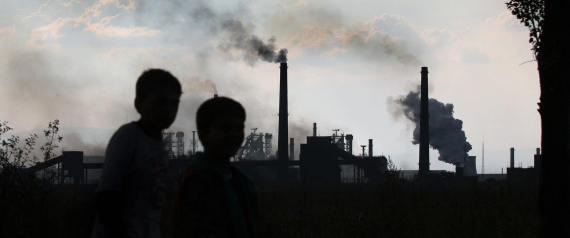
Chemical-polluters
The DDT manufactured back in Rachel Carson's day, recent reports indicate, is still killing robins and other birds.
The Velsicol Corporation that produced it is the company that threatened Rachel Carson with a lawsuit if she dared to publish her environmental health classic,
Silent Spring, in 1962. Carson ignored the threats and helped spark the modern environmental movement.
Velsicol continued to manufacture DDT, dieldrin, and other nasty pesticides now banned until they closed and were later taken over by the EPA in 1981.The Velsicol legacy today is a series of toxic Superfund sites, in and around St. Louis, Michigan, north of Lansing, that are still killing robins over fifty years after Silent Spring. Recent findings from the EPA covered in a new report from Environmental Health News show that a nearby elementary school and neighborhood homes have levels of DDT harmful to birds. And they may also pose health risks to children. Although EPA sampling to date has not found levels in playing fields that are considered harmful to kids, some neighbors' yards have shown amounts of DDT that are hazardous to humans. Erring on the side of caution, the EPA is digging up the fields at St. Louis' TS Nurnberger Middle School and removing its DDT-contaminated dirt.
Significantly, the EPA only monitored the elementary school fields after continued pressure from activist community groups. Environmental Health News quotes Jane Keon, secretary of the Pine River Superfund Citizen Task Force, who said there was major flooding about 20 years ago, which left the school athletic fields under seven feet of water, depositing contaminated sediment from the nearby Pine River.
"We all assumed there was DDT on that field," Keon said. "We kept telling the EPA that they should test there."
Velsicol's legacy also consists of toxic residues throughout surrounding neighborhoods of other chemicals like the PBBs used as flame retardants in pajamas. All in all, to date, some 25,000 tons of dirt have been removed in residential areas alone, with another 18,000 tons still to come.
What is of most concern, however, is that no comprehensive human health studies have yet to be carried out for the residents in and around Velsicol and the Pine River watershed.Clearly, citizens of the entire area still face significant environmental health risks despite clean ups over the years and some improvements in the rates of animal and bird deaths. In addition to robins, Rachel Carson was most prophetic in
Silent Spring about the health effects from DDT and other toxins on people
. These include effects on fertility, immunity, hormones and brain development -- with children and fetuses at higher risk.What may be most significant of all about the findings of bird and human health risks from the Velsicol chemical legacy, however, is it relevance to contemporary debate over pesticides and other toxic chemicals. Thousands of new pesticides and other potentially toxic chemicals are manufactured each year. Given constant conservative attacks on the EPA and limits on its funding, most new chemicals are not even tested. And, like the Velsicol Corporation before them, a number of today's chemical manufacturers still strenuously oppose any serious regulation or control.And, as if to honor the toxic legacy of Velsicol, they continue to attack and attempt to discredit Rachel Carson more than fifty years after her death. Chemical polluters understand the lasting danger to them from the accuracy and prophetic nature of Carson's scientific warnings about pesticides and the persuasive power of her writing. They hope to discredit, or at least tarnish, her science and, by association, all environmentalists. But the dead robins and human health hazards caused by DDT still found near the old Velsicol site in Michigan are clear evidence that the manufacturers have been wrong and that Silent Spring was right.
Comment: See also: Birds in central Michigan are dying due to decades-old DDT pollution